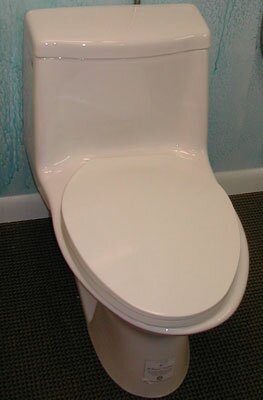COMMODE
July 11, 2007 – 5:33 pm
COMMODE
 
The [[commode]] is a very vital piece of furniture in today’s modern world – something we cannot do without. The word ‘commode’ has its roots in French, meaning convenient or suitable. According to the dictionary a commode to a piece of furniture. Originally commode meant a cabinet with doors that could be used as a washstand. It also served as a closed space for hiding a chamber pot. Before the days of modern plumbing the middle class in Europe used these commodes. Modern English uses the word to mean a porcelain toilet or any chair improvising for a chamber pot. In French the word ‘la commode’ continues to refer to a chest of drawers with short legs. Before the flushing age each American home had a washstand containing a dry sink and a commode that could be hidden by doors. The unit was kept in the room or an adjoining chamber together with a pitcher of water. The women who cleaned it were known as the chamber maids. Interior plumbing has brought about a great change in the lives of people – it has brought into the house the commode, which flushes itself clean.Â
There are commodes that can be kept beside the bed and is useful for the elderly and sick who are unable to go to the bathroom. It can be fixed over the toilet that has already been installed as a raised chair with a hole. It helps the user to stand. Then arm rests drops away to allow the person to return to the bed without difficulty and without external help. Some commodes are extra large with a bigger area for sitting giving greater comfort and strength. It is discreet with a cover making it look like a chair. This saves embarrassment.
The commode has met the needs of modern man. But it has raised many questions. These problems come with the invention. The seat cover of the commode might be wonderful for the back and knees but if it is not dry then a question arises about health. It is a source of infection from the seat to the skin of the user; from one user to another. But the danger is not confined to the toilet throne alone. It is prevalent even when you touch a tap or the top of a wash basin, especially in public toilets and rest rooms. The only answer seems to be personally seeing to the washing of hands. Even then the touch of the commode can not only be yucky but also dangerous.Â
What happens in space? There too the brave hearts have to mount a cramped space privy where a waste-treatment plant has been installed. It looks something akin to an airlines privy. The commode components are hooked together. Inside a water closet there is a commode with double thigh-bars and restraints for the foot. Remember there is no gravity and everything seems to float. The commode works by suctioned air to pull the waste in a treatment can which is fixed below it. The trouble with zero gravity is that it is not just arms and legs but the waste will not stay put. So a suction device is a must. The waste cans look like drums. When they fill up, after every three of four weeks these are shifted to progress supply ships or trash dumpsters. When the return journey takes place these burn up.
Are flushing commodes good for our planet? Here is raised another big question by the anti-commode lobby. It is linked with recylcing and making our lives more productive as well as simple. But the issue might be uncomfortable to those who do not know where the human waste goes once it has been flushed out of our sight. Composting toilets are now being introduced or rather the attempt is being made to make it popular. It is not the old fashioned pit style toilet. There is a wide range. There is the simple one with twin chambers and the advanced type with tynes that rotate. To it are fitted temperature and moisture controlling tools that are electronically operated. These are excellent converters of human waste to biological use. The best point is that it is cheap for the individual as well as the community. It saves on energy and has a positive aspect on fertilizing the earth back to its natural richness.
Â
In Asia too commodes have become very popular during the past few decades. In the core city area the sewerage system flushes away the waste to a convenient distant spot where it is often used as manure. Calcutta has the best recycling process of human waste in the world. In the suburbs there is an underground septic tank which has to be cleaned in cyclical order.Â
The most serious charge brought against commodes is that while it may be alright for the sick and the old, the posture of sitting on the chair-like commode is not natural and good for long term health. Apart from infections it might lead to chronic constipation because enough pressure is not exerted on the lower abdomen.Â
Â
Â
Â